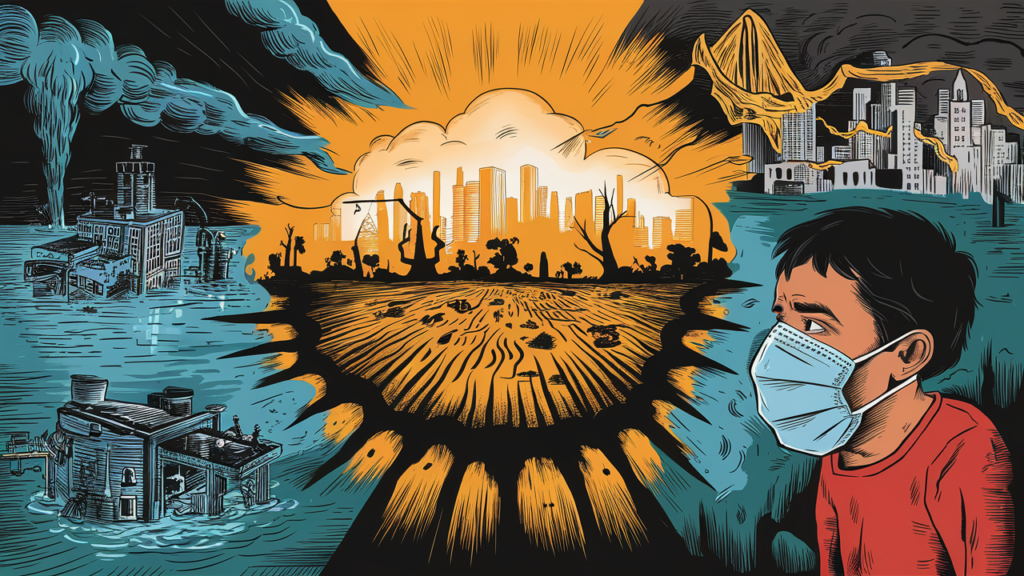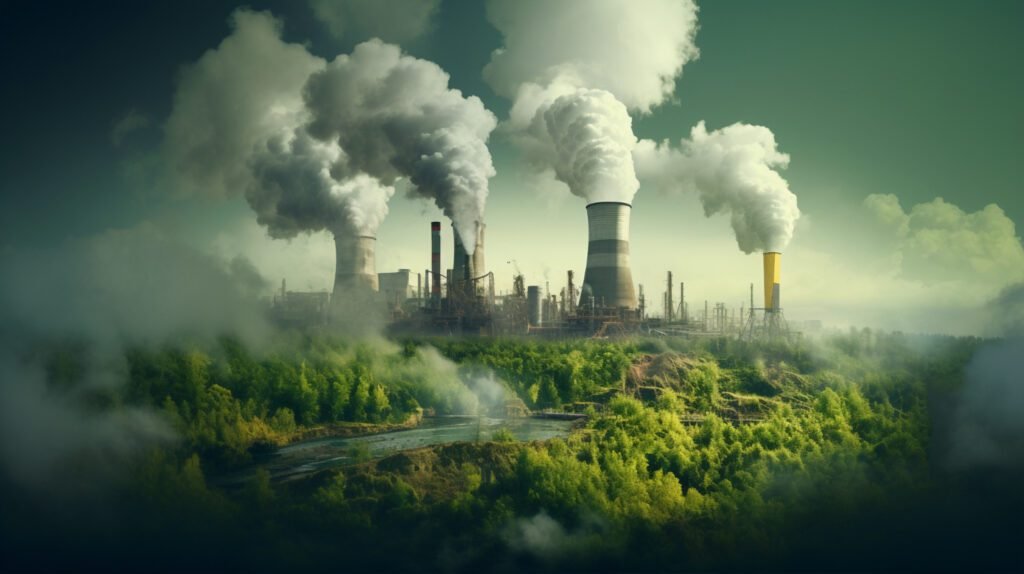Economic Consequences of Global Warming: Why We Can’t Afford to Wait
The Silent Crisis: Unveiling the True Cost of Climate Change
Imagine waking up to a world where extreme weather events are the norm, insurance premiums have skyrocketed, and basic necessities are increasingly scarce and expensive. This isn’t a scene from a dystopian future—it’s a reality we’re inching closer to every day. Global warming is not just an environmental issue; it’s a profound economic challenge that demands our immediate attention. Let’s do it before it’s too late.

Global Warming and Heatwaves – 2024
Economic Turbulence: The Rising Cost of Natural Disasters
Natural disasters exacerbated by global warming are wreaking havoc on our economy. In 2020 alone, the United States faced 22 separate billion-dollar weather and climate disasters, costing a total of $95 billion . These events disrupt local economies, destroy infrastructure, and result in huge financial burdens for recovery efforts. The frequency and intensity of these disasters are projected to increase, further straining our economic resources.
The Agriculture Sector: Battling Unpredictable Weather
Our food supply is under threat. Global warming is leading to unpredictable weather patterns, affecting crop yields and food production. According to the Food and Agriculture Organization (FAO), global crop yields could decline by up to 10% by 2050 . This not only threatens food security but also impacts the livelihoods of millions of farmers worldwide. The economic ripple effects are enormous, from rising food prices to increased import dependencies.
Energy Expenditures: Escalating Costs and Investments
The energy sector is facing significant challenges as well. Rising temperatures increase the demand for air conditioning, driving up electricity consumption and costs. The International Energy Agency (IEA) estimates that by 2050, the global energy demand for cooling could be equivalent to China’s current electricity consumption . This surge in energy needs necessitates substantial investments in infrastructure and clean energy alternatives to mitigate further environmental damage.

Health Care Costs: The Burden of Climate-Related Illnesses
Global warming also poses a severe threat to public health, leading to increased medical costs. Heatwaves, for instance, cause heat-related illnesses and deaths, particularly among vulnerable populations. The Centers for Disease Control and Prevention (CDC) reports that the annual cost of treating heat-related illnesses in the United States could exceed $10 billion . Additionally, the spread of vector-borne diseases like malaria and dengue fever is expected to rise, further straining healthcare systems and economies worldwide.
Labor Productivity: The Heat Is On
Rising temperatures are making it harder for people to work, especially in outdoor and labor-intensive jobs. Studies show that labor productivity declines by about 2% for every degree Celsius increase in temperature. This loss in productivity can translate to billions of dollars in economic losses annually. For example, the International Labour Organization (ILO) estimates that by 2030, over 2% of total working hours worldwide could be lost due to heat stress, equivalent to 80 million full-time jobs and $2.4 trillion in economic losses.
Property and Real Estate: The Sinking Value of Coastal Properties
Coastal regions are particularly vulnerable to the economic impacts of global warming. Rising sea levels and increased frequency of severe storms threaten coastal properties, leading to plummeting real estate values. The Union of Concerned Scientists projects that by 2045, over 300,000 coastal homes in the United States, worth approximately $117.5 billion, will be at risk of chronic flooding. This not only affects homeowners but also local economies that rely on property taxes and tourism revenue.
Global Trade: Disruptions in Supply Chains
Global warming is disrupting international trade by affecting critical infrastructure and supply chains. Extreme weather events can damage ports, roads, and railways, leading to significant delays and increased costs. The World Economic Forum highlights that disruptions in supply chains due to climate change could cost the global economy up to $1.5 trillion by 2030. Companies are now being forced to invest in climate resilience to protect their operations and ensure business continuity.
Migration and Refugees: The Human and Economic Toll
As global warming continues to affect regions differently, we are likely to see an increase in climate-induced migration. People will be forced to leave their homes due to rising sea levels, extreme weather, and loss of livelihoods. The World Bank estimates that by 2050, climate change could displace over 143 million people in sub-Saharan Africa, South Asia, and Latin America alone. This mass migration will have significant economic implications, including increased pressure on urban areas, higher unemployment rates, and the strain on social services and infrastructure.
Financial Markets: The Risk of Climate-Related Financial Crises
The financial sector is not immune to the impacts of global warming. Climate change poses significant risks to financial stability, including the potential for stranded assets, where investments in fossil fuels and other carbon-intensive industries lose their value. The Network for Greening the Financial System (NGFS) warns that climate-related financial risks could lead to a systemic financial crisis if not adequately addressed. Investors and financial institutions are now increasingly factoring in climate risks when making investment decisions, leading to a shift towards more sustainable and resilient financial strategies.
The Path Forward: Investing in Climate Resilience and Sustainability
To mitigate the economic impacts of global warming, significant investments in climate resilience and sustainability are crucial. This includes investing in renewable energy, enhancing infrastructure to withstand extreme weather, and adopting sustainable agricultural practices. The benefits of these investments are manifold, from reducing greenhouse gas emissions to creating new jobs and economic opportunities.
Governments, businesses, and individuals all have a role to play. Policies that promote green technologies and sustainable practices can drive economic growth while protecting our planet. Additionally, public awareness and education on the economic impacts of global warming can spur collective action towards a more sustainable future.
Conclusion: Economic Consequences of Global Warming
The economic impacts of global warming are profound and far-reaching, affecting every sector of the economy. From natural disasters to health care costs, labor productivity to global trade, the financial toll of inaction is staggering. However, by investing in climate resilience and sustainable practices, we can mitigate these impacts and build a more resilient and prosperous future. Let’s do it before it’s too late.


